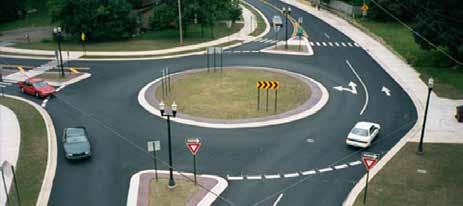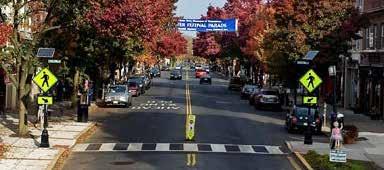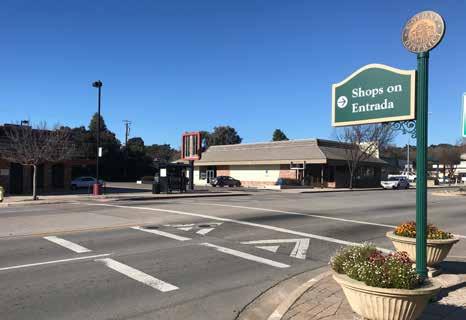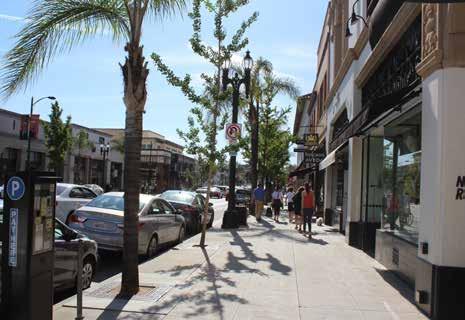
2 minute read
4.4 Traffic Calming
In addition to the pedestrian and bicycle solutions mentioned in the previous sections, certain traffic calming techniques can also be implemented to increase the accessibility for pedestrians and bicyclists to transit stops. Aside from increasing accessibility, traffic calming increases safety for pedestrians and cyclists, as well as safety for motorists. Traffic calming involves changes in street alignment, installation of challenges, and other physical measures to reduce traffic speeds and/ or cut-through motor vehicle traffic volumes. The intent of traffic calming is to alter driver behavior and to improve street safety, livability, and other public purposes. Other techniques consist of operational measures such as police enforcement and speed displays. The following examples provided are traffic calming measures that may be applied by cities throughout Omnitrans’ service area.
Roundabouts/Traffic Circles
Advertisement
A roundabout is a circular intersection with yield control at its entry that allows a driver to proceed at controlled speeds in a counterclockwise direction around a central island. Roundabouts are designed to maximize motorized and non-motorized traffic through their innovative design that includes reconfigured sidewalks, bikeway bypasses, high-visibility crosswalks, pedestrian flashing beacons, and other traffic measures. Roundabouts are typically implemented on collector or arterial roadways and may require additional right-of-way. A traffic circle is a small-scale traffic calming measure commonly applied at uncontrolled intersections on low volume, local residential streets. They lower traffic speeds on each approach and typically avoid or reduce right-of-way conflicts because the overall footprint is smaller compared to roundabouts. Traffic circles may be installed using simple markings or raised islands but are best accompanied with drought-tolerant landscaping or other attractive vertical elements. Traffic circles are also highly effective at calming traffic and reducing collisions, although at a much reduced cost compared to roundabouts.
Signals and Warning Devices
Traditional pedestrian signals remain the gold standard for high quality crossings for people walking, although some cases warrant new signal technologies. PHBs and RRFBs are special signals used to warn and control traffic at unsignalized locations to assist people walking in crossing a street via a marked crosswalk. Either of these devices should be installed at locations that have pedestrian desire lines and that connect people to popular destinations such as schools, parks, and retail. Research has shown that PHBs tend to have a 90 percent motorist compliance rate versus RRFBs, which tend to have an 80 percent motorist compliance rate. Traditional pedestrian signals tend to have around a 100 percent compliance rate, which improves safety over other types of signals, and therefore are preferable for pedestrian facilities.
Traffic Circle Signal and warning devices

Signals and warning devices should be paired with additional pedestrian improvements, where appropriate, such as curb extensions, enhanced crosswalk marking, lighting, median refuge islands, corresponding signage, and advanced yield markings to mitigate multiple threat collisions on multi-lane roadways.
Speed Tables/Raised Crosswalks
Speed tables are flat-topped road humps, often constructed with textured surfacing on the flat section. Speed tables and raised crosswalks help to reduce vehicle speeds and enhance pedestrian safety.
On-Street Edge Friction
Edge friction is a combination of vertical elements such as on-street parking, bicycle routes, chicanes, site furnishings, street trees, and shrubs that reduce the perceived street width, which has been shown to reduce motor vehicle speeds.

Speed table

Edge friction





